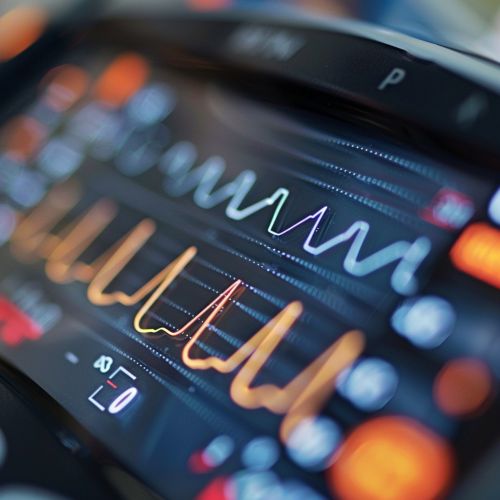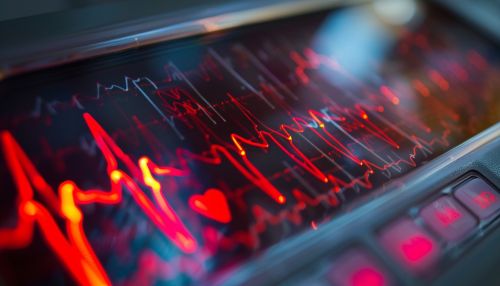Bradycardia
Definition
Bradycardia is a condition characterized by a slower than normal heart rate. The heart typically beats between 60 and 100 times per minute in an adult at rest. In bradycardia, the heart rate is less than 60 beats per minute. This slower heart rate can lead to a range of symptoms, including fatigue, weakness, dizziness, and at its most serious, cardiac arrestLearn more.
Causes
Bradycardia can be caused by a number of factors, including:
- Heart disease: Damage to heart tissues and aging can disrupt the electrical signals that control heartbeat.
- Metabolic problems: Conditions such as hypothyroidism can slow the body's metabolic processes, including the heart rate.
- Certain medications: Some drugs, including certain beta blockers and digoxin, can slow the heart rate.
- Sleep apnea: This sleep disorder, which causes breathing to stop and start again, can lead to bradycardia.
- Inflammatory disease: Conditions such as lupus or rheumatic fever can affect the heart.


Symptoms
Symptoms of bradycardia can vary depending on the severity of the condition. Some people with bradycardia may not experience any symptoms, while others may experience:
- Fatigue or weakness
- Dizziness or lightheadedness
- Shortness of breath
- Chest pain
- Confusion or memory problems
- Fainting or near-fainting spells
Diagnosis
Bradycardia is typically diagnosed through a physical examination, medical history, and tests. These tests may include:
- Electrocardiogram (ECG): This test records the electrical signals in the heart. It can help identify bradycardia and determine its severity.
- Holter monitor: This portable device records a continuous ECG, usually for 24 to 72 hours. It can help identify bradycardia that comes and goes.
- Event monitor: This portable ECG device is intended to record a patient's heart activity only at certain times, especially to capture irregularities that occur at unpredictable times.
- Echocardiogram: This test uses sound waves to produce images of the heart's size, structure and motion.
Treatment
Treatment for bradycardia depends on the underlying cause of the condition, the severity of symptoms, and the overall health of the patient. Treatment options may include:
- Addressing underlying conditions: If bradycardia is caused by an underlying condition, such as hypothyroidism or obstructive sleep apnea, treating that condition may alleviate the bradycardia.
- Medication adjustment: If a certain medication is causing bradycardia, a doctor may adjust the dosage or suggest an alternative medication.
- Pacemaker: In some cases, a pacemaker, a small device implanted in the chest to help control abnormal heart rhythms, may be necessary.
Prognosis
With appropriate treatment, most people with bradycardia can lead full, healthy lives. However, the long-term outlook for people with bradycardia depends on the underlying cause of the condition, the severity of the bradycardia, and the individual's overall health.
